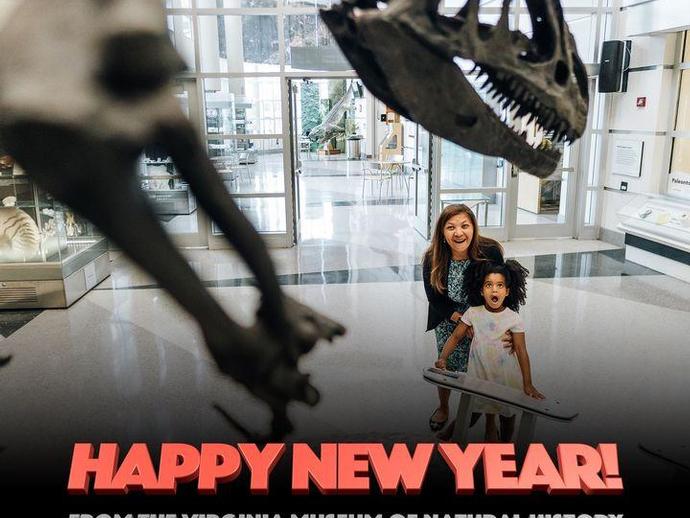News Articles
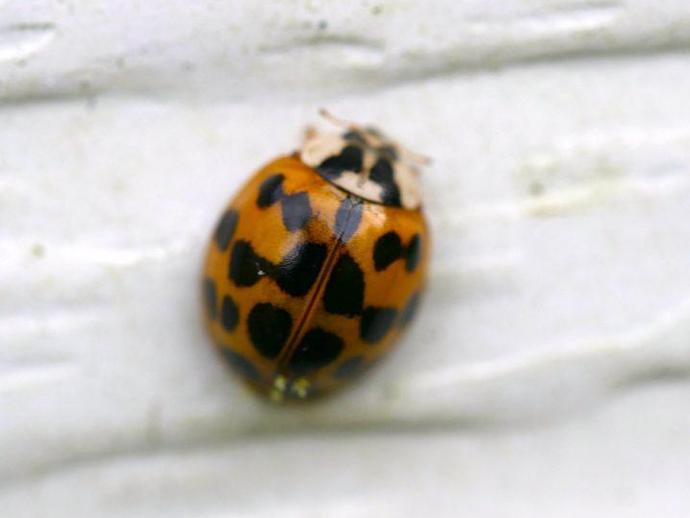
We're reaching into the archives for today's #BenInNature update presented by our friends at ...
December 31, 2021
We're reaching into the archives for today's #BenInNature update presented by our friends at Carter Bank & Trust! The following post was originally published on October 20, 2020. I did a nature post about the multicolored Asian ladybeetle (Harmonia axyridis) way back in May, but now seems like a good time to revisit these little guys. Over the last few days, I've noticed that they're all over the outside of my house -- and in fact, if I stand still for too long outside, they'll start landing on me! You've probably also noticed a bunch of these beetles on the outside or inside of your home just lately, and you might be wondering why they're trying to move in. Just to refresh your memory (and mine, for that matter), ...
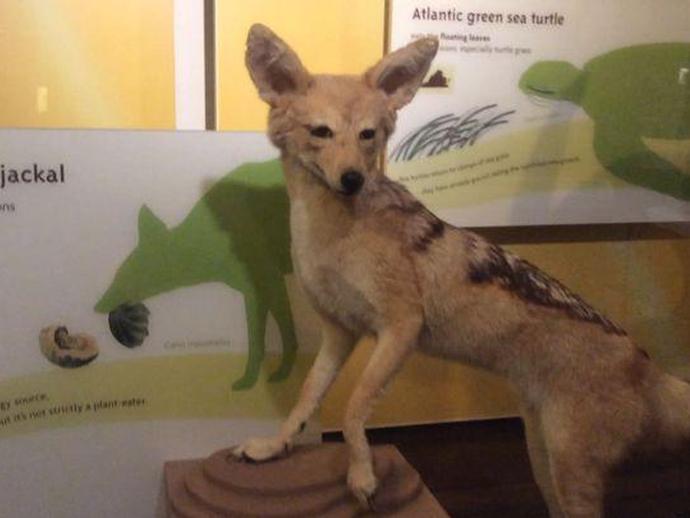
VMNH Educator Terri Robertson is here with a brand new episode of "Museum Minute" to highlight ...
December 30, 2021
VMNH Educator Terri Robertson is here with a brand new episode of "Museum Minute" to highlight the black-backed jackal, which is currently on exhibit inside the Lee and George W. Lester, II How Nature Works gallery! ABOUT MUSEUM MINUTE The Virginia Museum of Natural History has a spectacular assortment of displays within its exhibit galleries! Some displays are unforgettable, while others don't always get the attention they deserve. Through the original series "Museum Minute", museum educators highlight various displays throughout the exhibit galleries, while providing intriguing facts you may not have known. "Museum Minute" is made possible thanks to VMNH Corporate Partners Carter Bank & Trust (www.cbtcares.com) and ...
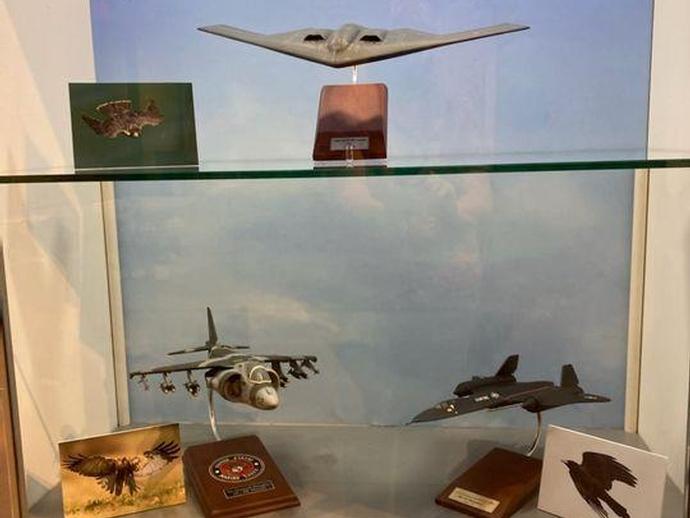
�� We have take off!
December 30, 2021
�� We have take off! ✈️� Museum staff are currently hard at work installing our newest special exhibit, "The Science of Flight", which will make its public debut on Saturday, January 22. When completed, the exhibit will provide visitors with an in-depth look into the many different methods animals take to the air and how studying the animal kingdom provided the basis for humans' ability to take flight. Be sure to join us on January 22 for "The Science of Flight" Exhibit Opening Celebration! The event will feature a variety of one-day-only, flight-themed offerings, including live birds of prey with licensed Master Falconer Robb Herst! #WhatWillYouDiscover?
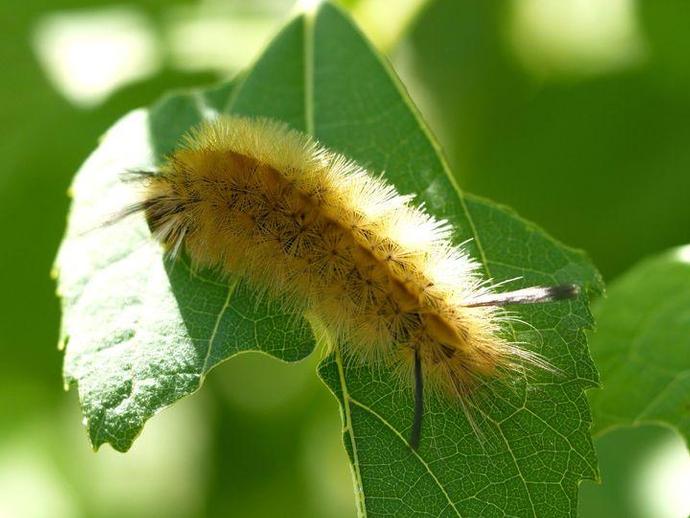
We're reaching into the archives for today's #BenInNature update presented by our friends at ...
December 30, 2021
We're reaching into the archives for today's #BenInNature update presented by our friends at Carter Bank & Trust! The following post was originally published on October 19, 2020. The banded tussock moth caterpillar (Halysidota tessellaris) looks like the kind of caterpillar that would really ruin your day if one fell down the back of your shirt. Despite its appearance, however, these caterpillars do not have stinging hairs! While the hairs of almost all caterpillars can cause irritation in individuals with sensitive skin, these little guys are nothing to worry about otherwise. As best I can tell, the chances of having an allergic reaction to a non-venomous caterpillar are about 1 in 100; in other words, they're nothing to ...
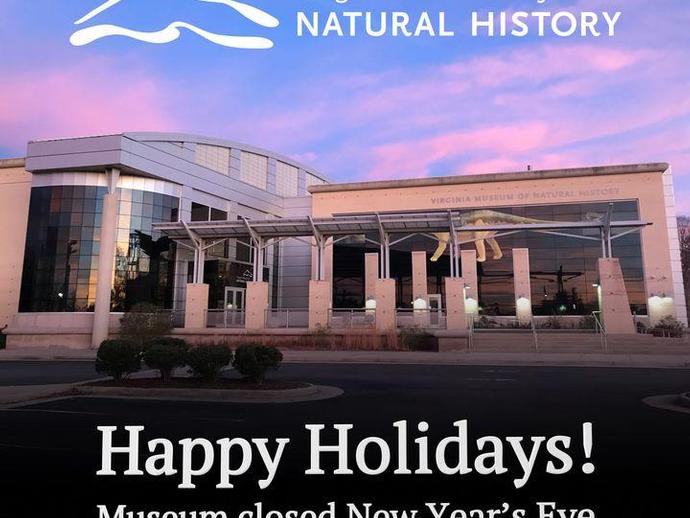
Happy Holidays from the Virginia Museum of Natural History!
December 29, 2021
Happy Holidays from the Virginia Museum of Natural History! If you are planning to visit us soon (and we really hope you are), please note that the museum will be closed to visitors on New Year's Eve and New Year's Day. Additionally, the museum is closed to visitors on Sundays and Mondays. Happy Holidays and we hope to see you here at VMNH soon!
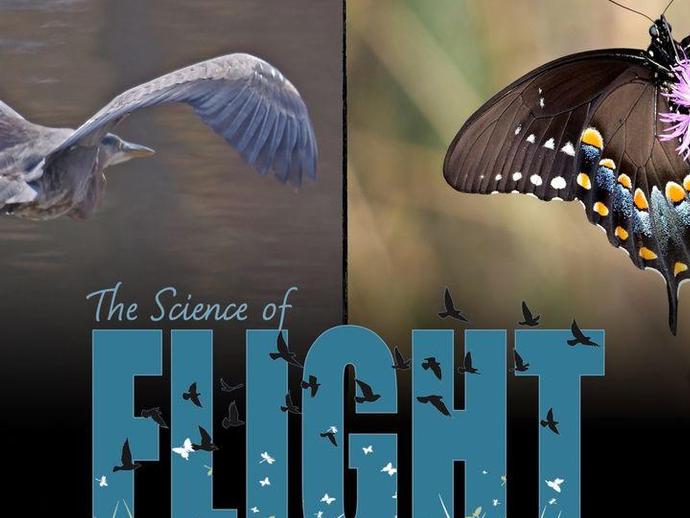
Start 2022 with an adventure to the Virginia Museum of Natural History ...
December 29, 2021
Start 2022 with an adventure to the Virginia Museum of Natural History, as we celebrate the opening of the special exhibit "The Science of Flight" on Saturday, January 22!
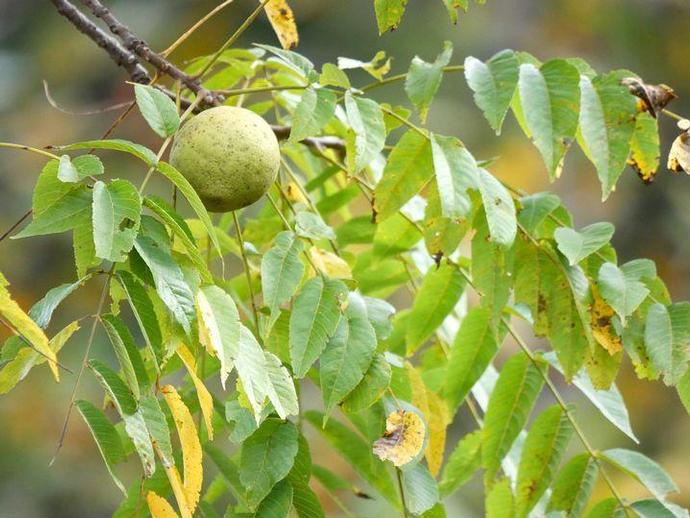
We're reaching into the archives for today's #BenInNature update presented by our friends at ...
December 29, 2021
We're reaching into the archives for today's #BenInNature update presented by our friends at Carter Bank & Trust! The following post was originally published on October 16, 2020. The eastern black walnut (Juglans nigra) is fairly widespread in eastern North America, and I have a number of them on my property. The pictured black walnut tree is growing right next to a building with a tin roof, which is unfortunate, because every time the wind blows and a walnut hits the roof I think that I'm under attack. Even though its wood is highly desirable, black walnut is only increasing in numbers in recent years. This is due to a combination of factors. For one, various epidemics have devastated the numbers of a lot of other ...
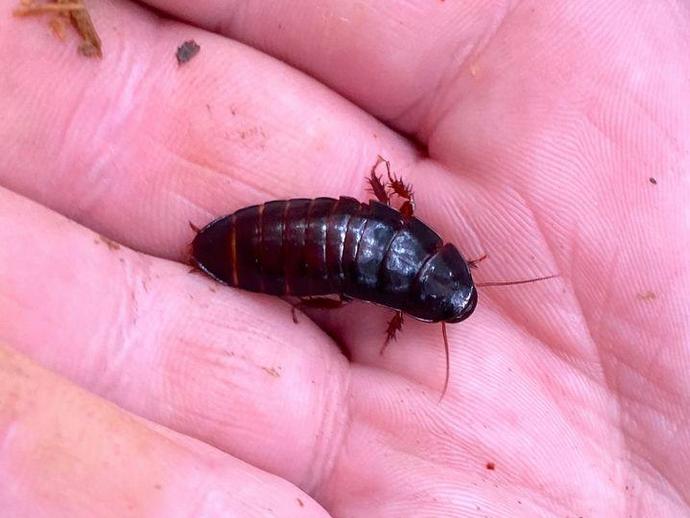
We're reaching into the archives for today's #BenInNature update presented by our friends at ...
December 28, 2021
We're reaching into the archives for today's #BenInNature update presented by our friends at Carter Bank & Trust! The following post was originally published on October 15, 2020. Roaches rank pretty low when it comes to beloved insects, but believe it or not, you might actually like this roach (or at least respect it)! This is Cryptocercus punctulatus, also known as the wood roach or brown-hooded cockroach, and unlike a lot of roaches, it has no interest in moving into your home. In fact, it requires so much moisture and such specific conditions that it can't survive or breed inside your house! The easiest way to tell that you have a wood roach on your hands is that they don't have wings. As the name suggests, wood ...
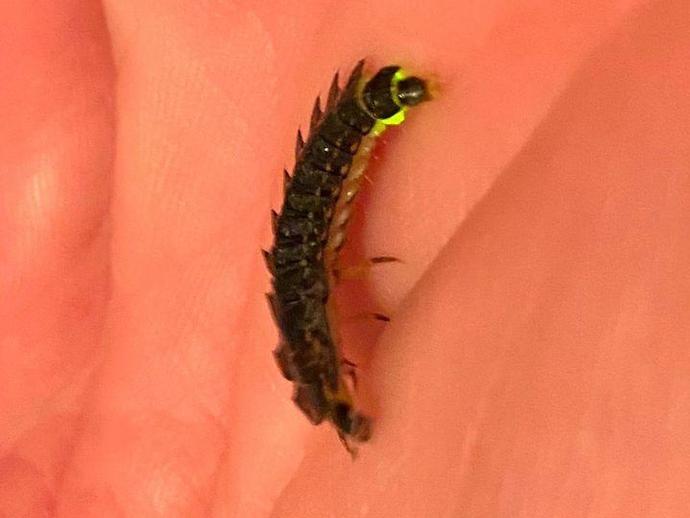
We're reaching into the archives for today's #BenInNature update presented by our friends at ...
December 27, 2021
We're reaching into the archives for today's #BenInNature update presented by our friends at Carter Bank & Trust! The following post was originally published on October 14, 2020. We're all familiar with adult lightning bugs, but have you ever seen a larval lightning bug? According to VMNH Collections Assistant Dr. Jackson Means, this firefly larva likely belongs to the genus Photuris, also known as the "femme fatale" lightning bugs. This is because the adult females imitate the light signals of other species' females in order to lure in unrelated males and eat them! Adult fireflies are active during the summer, and as summer winds to a close, the females lay eggs in leaf litter. The eggs hatch just a few weeks later and ...
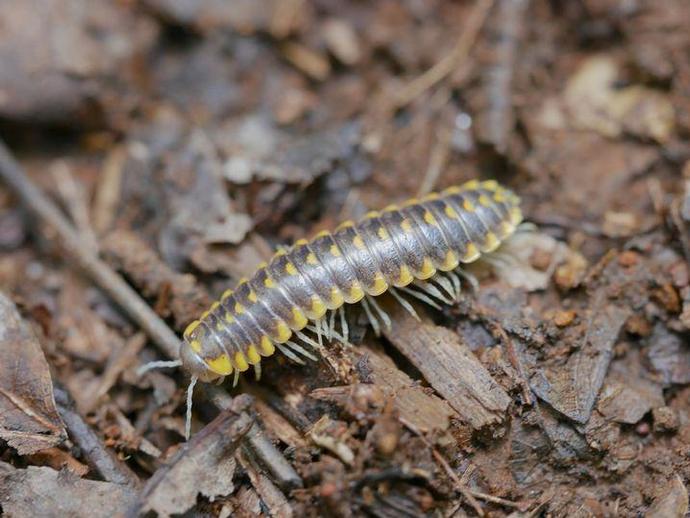
We're reaching into the archives for today's #BenInNature update presented by our friends at ...
December 26, 2021
We're reaching into the archives for today's #BenInNature update presented by our friends at Carter Bank & Trust! The following post was originally published on October 13, 2020. This is Apheloria virginiensis, and it's one of the most widespread millipedes in the eastern U.S. Dr. Jackson Means, who is a Collections Assistant at VMNH and an expert on millipedes, filled me in on some interesting facts about this little guy! According to Dr. Means, this species can be found from northern New York all the way down to northern North Carolina, which is a very wide range for a millipede; they're usually restricted to fairly small areas. Despite that, there is still a lot to learn about this species. Millipedes are scavengers ...
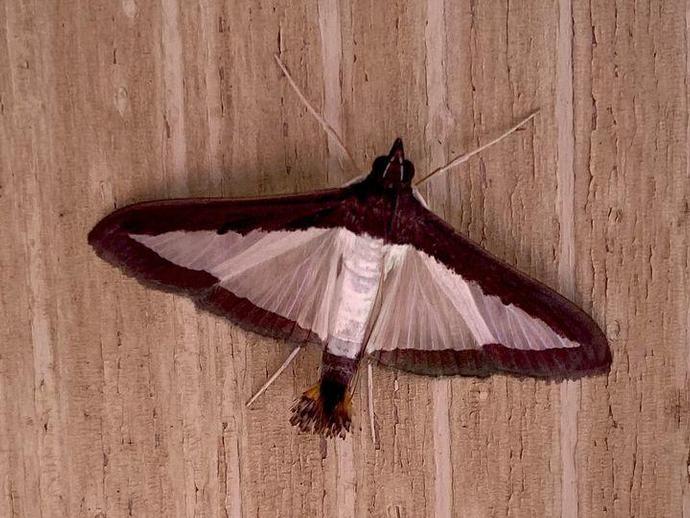
Merry Christmas!
December 25, 2021
Merry Christmas! We're reaching into the archives for today's #BenInNature update presented by our friends at Carter Bank & Trust! The following post was originally published on October 12, 2020. The melonworm moth (Diaphania hyalinata) can be found throughout much of eastern North America, and its caterpillars can be a real pest if you have a garden. Melonworm caterpillars will eat the leaves of cucumbers, squash, pumpkins, and -- of course -- melons. However, the caterpillars aren't as big of an issue in the northern parts of the moth's range. In Virginia, you'll likely only see these moths in October and November. However, in the warmer Gulf states, melonworm moths produce multiple generations per year and can be found ...
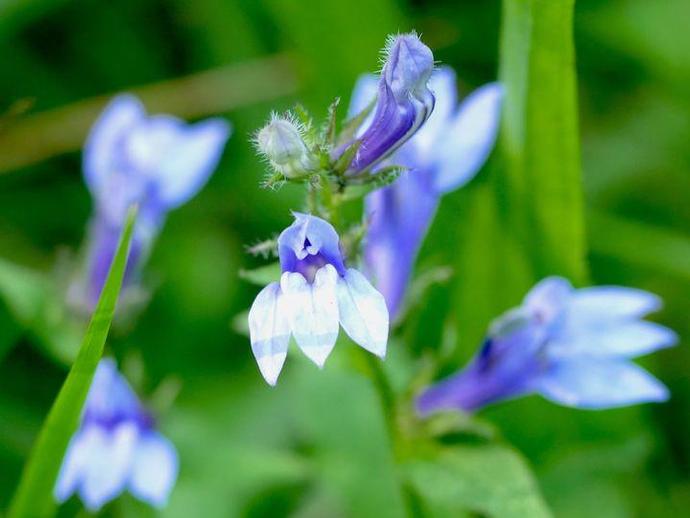
We're reaching into the archives for today's #BenInNature update presented by our friends at ...
December 24, 2021
We're reaching into the archives for today's #BenInNature update presented by our friends at Carter Bank & Trust! The following post was originally published on October 9, 2020. There are more than 400 species of Lobelia worldwide, but downy Lobelia (Lobelia puberula) is the one you're most likely to encounter in southwest Virginia. It's the most common Lobelia in the Southeast, and it's usually in bloom from July through October. Downy Lobelia tends to grow in damp areas with sun or partial shade, such as riverbanks, boggy areas, and even roadside ditches. I found this one at the edge of a hayfield about three feet from a creek. While it isn't quite as dramatic as its relative, the great blue Lobelia (Lobelia ...
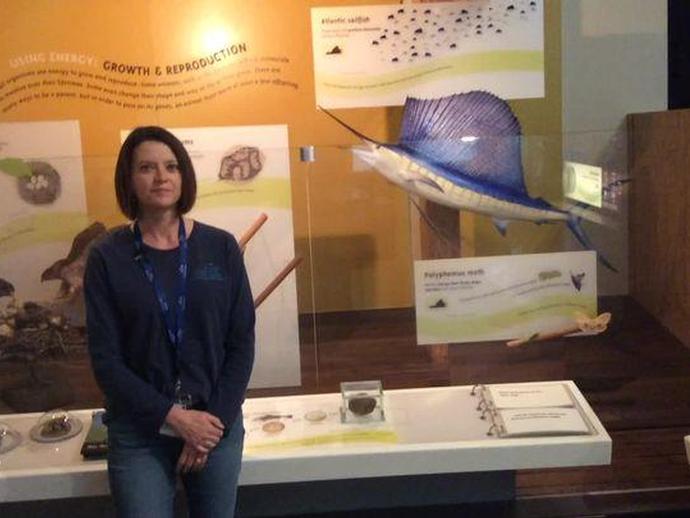
VMNH Education Manager Christy Deatherage is back with a brand new episode of "Museum Minute" to ...
December 23, 2021
VMNH Education Manager Christy Deatherage is back with a brand new episode of "Museum Minute" to highlight the sailfish currently on exhibit inside the Lee and George W. Lester, II How Nature Works gallery! ABOUT MUSEUM MINUTE The Virginia Museum of Natural History has a spectacular assortment of displays within its exhibit galleries! Some displays are unforgettable, while others don't always get the attention they deserve. Through the original series "Museum Minute", museum educators highlight various displays throughout the exhibit galleries, while providing intriguing facts you may not have known. "Museum Minute" is made possible thanks to VMNH Corporate Partners Carter Bank & Trust (www.cbtcares.com) and Boxley ...
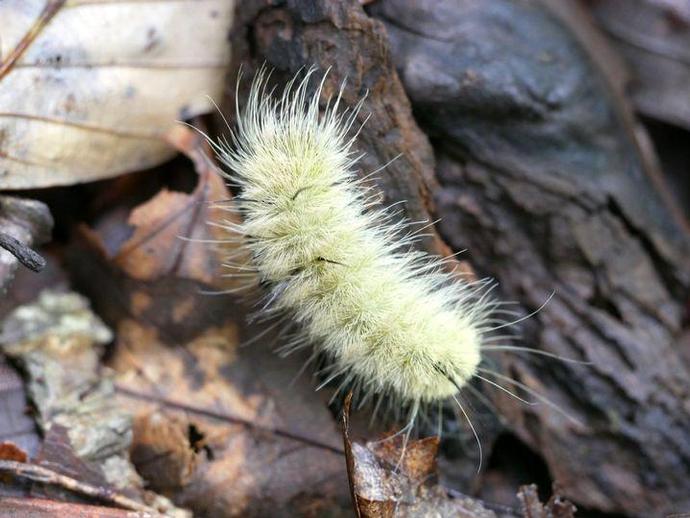
We're reaching into the archives for today's #BenInNature update presented by our friends at ...
December 23, 2021
We're reaching into the archives for today's #BenInNature update presented by our friends at Carter Bank & Trust! The following post was originally published on October 8, 2020. The American dagger moth caterpillar (Acronicta americana) definitely looks like the kind of caterpillar that would ruin your day if you were to touch it. However, while you shouldn't touch unfamiliar caterpillars since many have venomous spines, this little fellow does not (although there are reports that its hairs can cause skin irritation, so you should still be careful if you have sensitive skin). American dagger moth caterpillars can be found from July through October, while the adult moths can be spotted from April through September. These ...
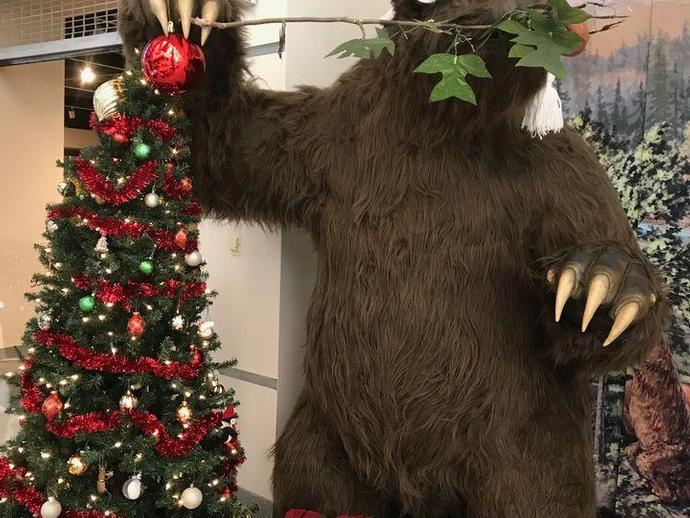
Happy Holidays from Clawd and the rest of us here at the Virginia Museum of Natural History!
December 23, 2021
Happy Holidays from Clawd and the rest of us here at the Virginia Museum of Natural History!! If you are planning to visit the museum over the holidays, please note that VMNH will be closed to visitors on Christmas Eve, Christmas Day, New Year's Eve, and New Year's Day. Additionally, the museum is closed to visitors on Sundays and Mondays. Happy Holidays and we hope to see you soon!!

During one of the museum's Homeschool Science & Engineering Academy programs in late November ...
December 22, 2021
During one of the museum's Homeschool Science & Engineering Academy programs in late November, students planted a variety of seeds, such as lettuce mix and basil, in preparation of growing them inside the museum's new HYVE LF-ONE hydroponic growth system. Today, we thought we'd check in on the growth...and we have to say that it's quite impressive! The museum's hydroponic growth system allows users to grow plants indoors year-round without the need for soil. Because soil is not used, the system requires significantly less water to grow plants. While the system is currently being used by our homeschool students, it will be available for on-site programs with interested school groups in the near future.
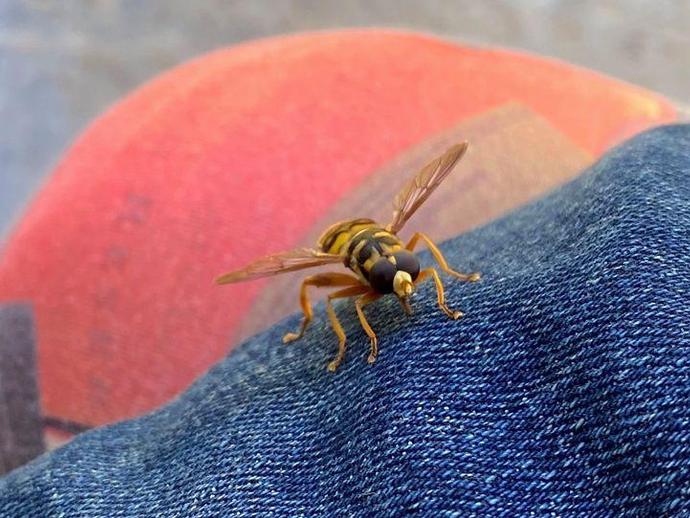
We're reaching into the archives for today's #BenInNature update presented by our friends at ...
December 22, 2021
We're reaching into the archives for today's #BenInNature update presented by our friends at Carter Bank & Trust! The following post was originally published on October 7, 2020. I was sitting on my back porch yesterday when this Virginia flower fly (Milesia virginiensis) came to visit, first by hovering near me and staring at me intently, then by landing on the sleeve of my jacket. While it may look like a yellowjacket at first glance (and is sometimes known as a "yellowjacket hoverfly"), these little guys are perfectly harmless! The Virginia flower fly is a hoverfly in the family Syrphidae, and the adults spend their time feeding on nectar and pollen from flowers. There are more than 6,000 species of hoverflies around ...
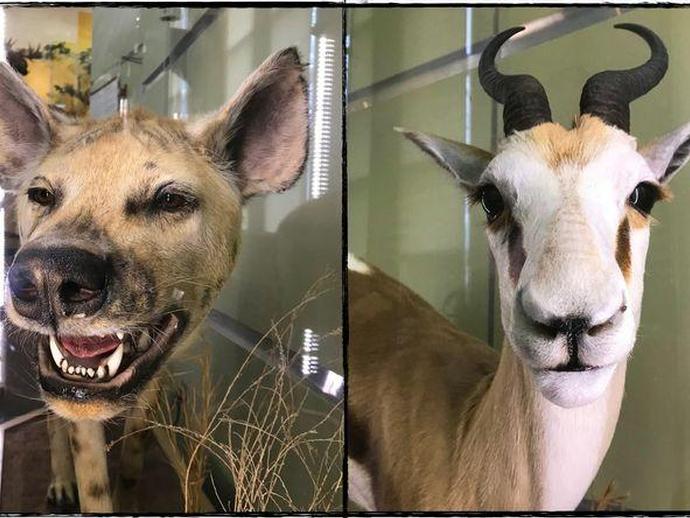
Look at the position of the hyena's eyes and the springbok's eyes
December 22, 2021
Look at the position of the hyena's eyes and the springbok's eyes. Do you notice a difference? Predators, like the hyena, have large, forward-facing eyes that allow them to judge distance for successful hunting. The eyes of prey animals, like antelopes, are positioned to the sides and high on their heads, providing a much wider field of view. There's much more to learn inside the museum's Hahn Hall of Biodiversity! #WhatWillYouDiscover?
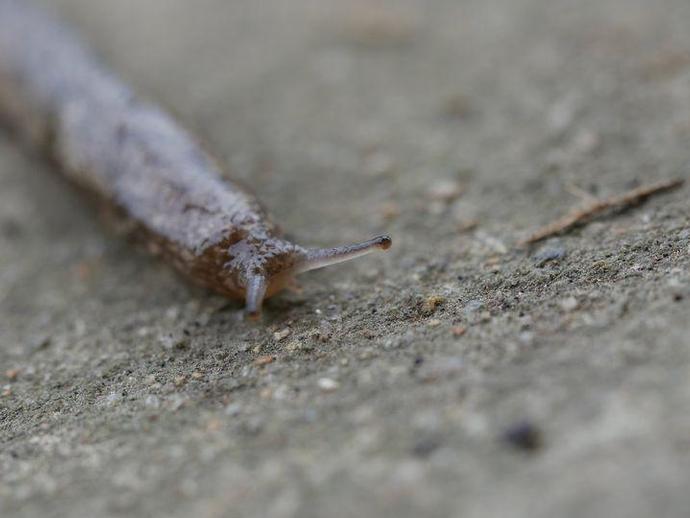
We're reaching into the archives for today's #BenInNature update presented by our friends at ...
December 21, 2021
We're reaching into the archives for today's #BenInNature update presented by our friends at Carter Bank & Trust! The following post was originally published on October 6, 2020. Yesterday we looked at snails, so it seems fitting that we follow that up by looking at slugs! While people tend to think snails are cute, people generally find slugs kind of revolting. Case in point: while there is a hilarious 1988 horror movie called "Slugs" about bloodthirsty killer slugs, the only movie about snails I'm familiar with is 2013's "Turbo," which is about a plucky snail who believes in himself and follows his dreams. It seems kind of unfair when you consider that the main tangible difference between the two molluscs is a shell -- ...
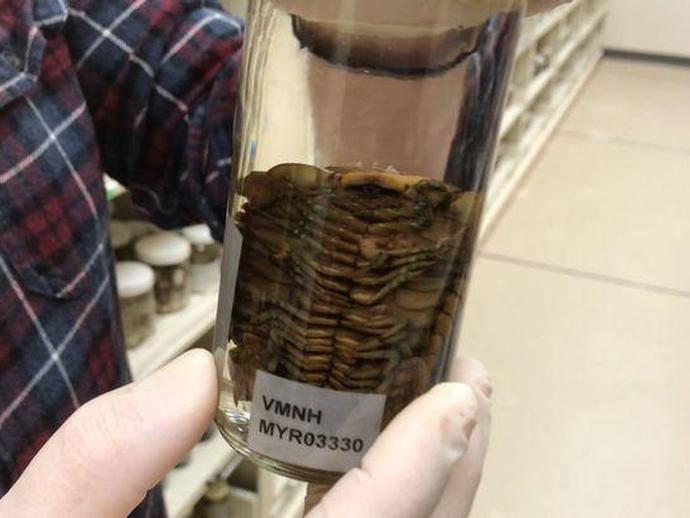
Did you know that the Virginia Museum of Natural History has one of the largest ...
December 20, 2021
Did you know that the Virginia Museum of Natural History has one of the largest, most diverse, and most important collection of millipedes in the world? VMNH Myriapodologist Dr. Jackson Means (millipede expert) knows this and was kind enough to give us a quick behind-the-scenes look at part of the millipede collection inside the museum's wet collections area (specimens preserved in alcohol) in this video specifically made for all of you leg lovers out there!
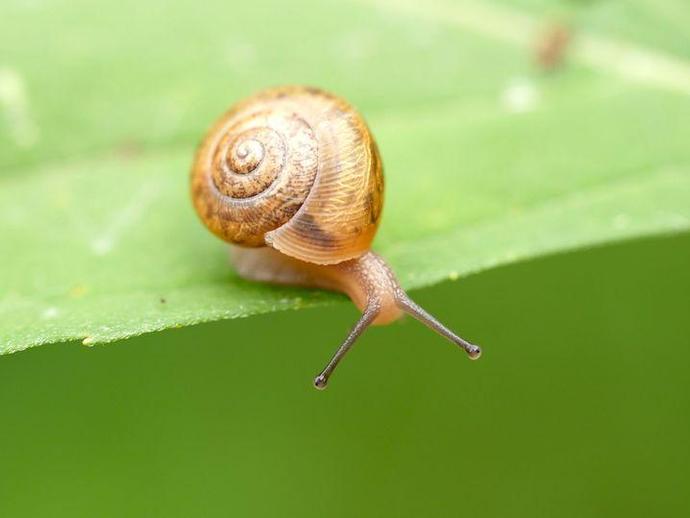
We're reaching into the archives for today's #BenInNature update presented by our friends at ...
December 20, 2021
We're reaching into the archives for today's #BenInNature update presented by our friends at Carter Bank & Trust! The following post was originally published on October 5, 2020. As fascinating as they are surprisingly delicious, there are more than 35,000 different species of land snail and they can be found on every continent except Antarctica! The defining feature of a land snail is its shell, which provides a number of benefits and a couple of drawbacks. Shells keep snails moist and protect them from predators, but they also limit their mobility and size. Aquatic snails don't have those same problems since they can rely on buoyancy to help them haul their shells around. While the largest sea snail (Syrinx aruanus, the ...
Unraveling the mystery of an extinct reptile: MALERISAURUS!
December 19, 2021
Unraveling the mystery of an extinct reptile: MALERISAURUS! Congratulations to VMNH Assistant Curator of Paleontology Dr. Adam Pritchard and VMNH Research Associates Dr. Sterling Nesbitt, Dr. Michelle Stocker, Dr. Nicholas Fraser, and Dr. Andrew Heckert, who served on an international team that recently authored the paper "Widespread azendohsaurids (Archosauromorpha, Allokotosauria) from the Late Triassic of western USA and India", which is now published in The Palaeontological Association's "Papers in Paleontology". In the paper, the paleontology team brought together information from museum collections on five continents to unravel the mystery of an extinct reptile: Malerisaurus. Resembling a long-necked Komodo dragon, ...
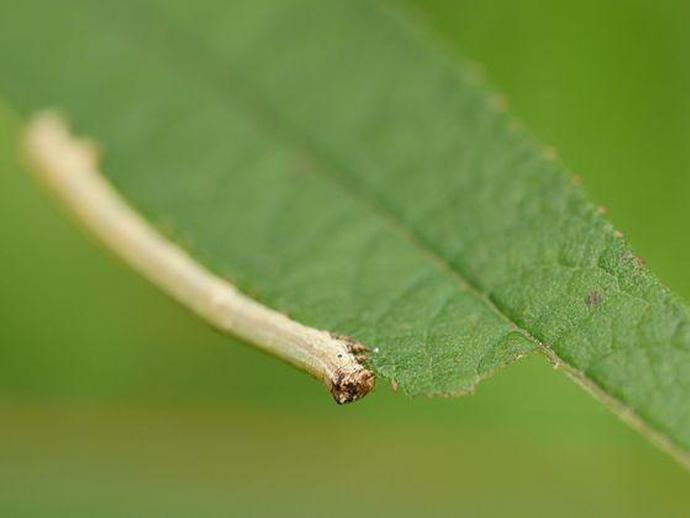
We're reaching into the archives for today's #BenInNature update presented by our friends at ...
December 19, 2021
We're reaching into the archives for today's #BenInNature update presented by our friends at Carter Bank & Trust! The following post was originally published on September 25, 2020. Inchworms, like the one seen here with a leaf it's been munching on, are caterpillars belonging to the family Geometridae. The name "Geometridae" comes from Ancient Greek and means "to measure the Earth." This name is derived from the unique way that inchworms move around, almost as though they're taking careful measurements. Unlike many caterpillars, inchworms don't have legs running the entire length of their body; instead, they have several pairs of legs at the front of their body and two or three pairs at their posterior end. To move around, ...
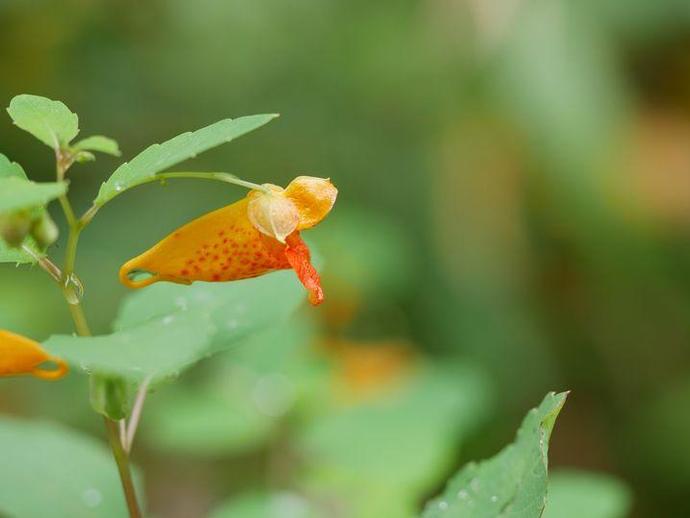
We're reaching into the archives for today's #BenInNature update presented by our friends at ...
December 18, 2021
We're reaching into the archives for today's #BenInNature update presented by our friends at Carter Bank & Trust! The following post was originally published on September 24, 2020. These beautiful little flowers belong to common jewelweed (Impatiens capensis), an annual that can be found throughout much of eastern North America. You can find it in ditches and along creeks, and it blooms from the late spring into the early fall (it's in bloom right now, at least in my neck of the woods in Patrick County). If you like having hummingbirds around, don't cut down any jewelweed you find on your property! Hummingbirds are one of the main pollinators of this plant, alongside bumblebees. Hummingbirds are particularly efficient ...
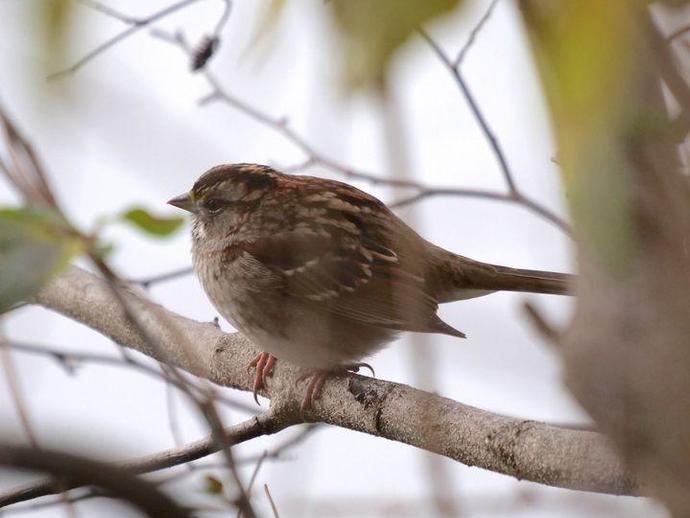
Ben here with another edition of #BenInNature presented by our friends at Carter Bank & Trust!
December 17, 2021
Ben here with another edition of #BenInNature presented by our friends at Carter Bank & Trust! The white-throated sparrow (Zonotrichia albicollis) may not look all that unusual, but its behavior is pretty unique! White-throated sparrows come in two different plumage variations, known as the tan-striped and the white-striped. On white-striped sparrows, the feathers on the crown are black with a white central stripe, while on the tan-striped variety, the crown is dark brown with a tan central stripe (the bird in the photo appears to be of the tan-striped variety). These two color morphs occur in roughly equal numbers, and when it comes time to breed, these birds almost always pair off with an individual of the opposite ...
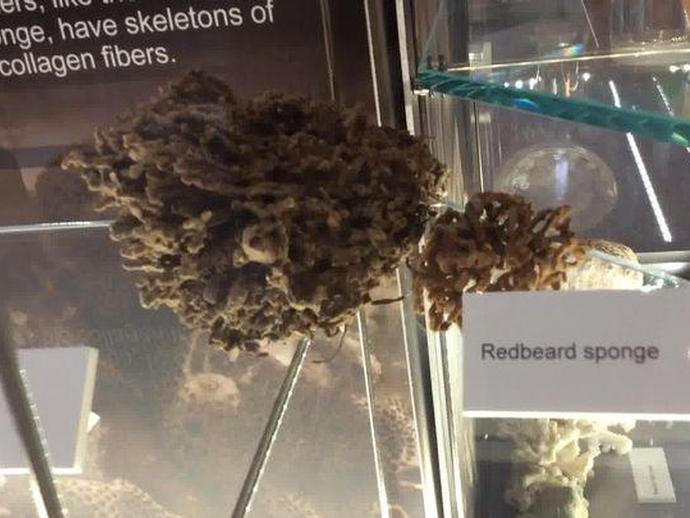
We're reaching into the archives for this week's "Museum Minute" ...
December 17, 2021
We're reaching into the archives for this week's "Museum Minute", when VMNH Education Manager Christy Deatherage was inside the museum's Harvest Foundation Hall of Ancient Life to highlight the sponges found within the "Stories from Skeletons" exhibit! ABOUT MUSEUM MINUTE The Virginia Museum of Natural History has a spectacular assortment of displays within its exhibit galleries! Some displays are unforgettable, while others don't always get the attention they deserve. Through the original series "Museum Minute", museum educators highlight various displays throughout the exhibit galleries, while providing intriguing facts you may not have known. "Museum Minute" is made possible thanks to VMNH Corporate Partners Carter Bank ...
With 1,306 legs of awesomeness, the first "true" millipede has finally been discovered!
December 16, 2021
With 1,306 legs of awesomeness, the first "true" millipede has finally been discovered! Although the name "millipede" translates to "a thousand feet", until now, no millipede had ever been described with more than 750 legs. The news broke after a team of scientists - including VMNH Research Associate Dr. Paul Marek and VMNH Myriapodologist Dr. Jackson Means - described the discovery in the scientific paper titled "The first true millipede—1306 legs long" published today in "Nature Scientific Reports", an open access journal that publishes original research from across all areas of the natural sciences, psychology, medicine and engineering. "We always hypothesized that there would be a 'true' millipede discovered ...
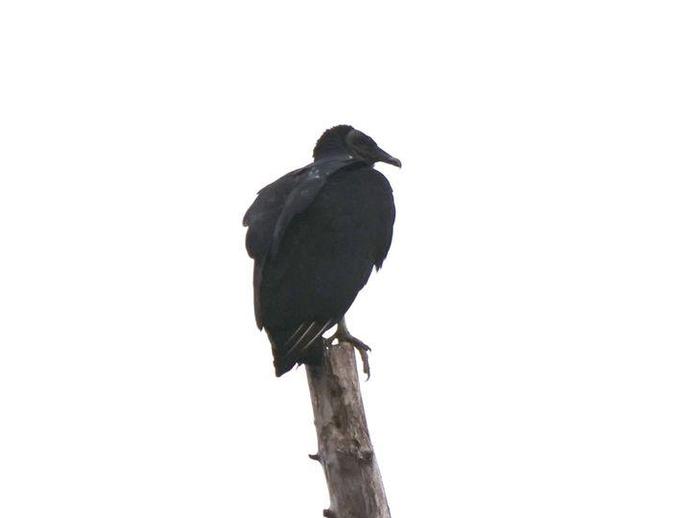
It's time for the Thursday edition of #BenInNature presented by our friends at Carter Bank & ...
December 16, 2021
It's time for the Thursday edition of #BenInNature presented by our friends at Carter Bank & Trust! The black vulture (Coragyps atratus) is one of two species of New World vulture that you'll find here in Virginia, the other one being the turkey vulture (Cathartes aura). There is also a third vulture you can find in the U.S. -- the California condor (Gymnogyps californianus). You're not going to spot one of those in Virginia, though! Compared to the turkey vulture, the black vulture has a much more restricted range here in the U.S.; while turkey vultures range all the way into Canada, black vultures are generally limited to the southeastern U.S. They have a huge southerly range, however, and are the most numerous vulture ...
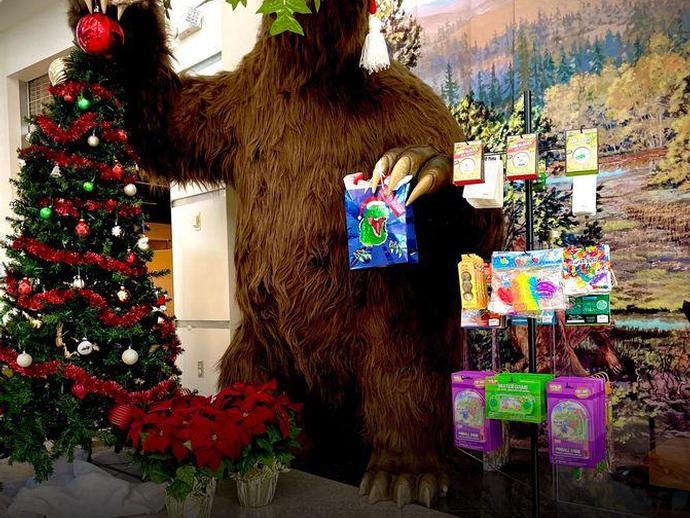
Looking for last-minute stocking stuffer ideas?
December 15, 2021
Looking for last-minute stocking stuffer ideas? How about a special gift to place beneath the Christmas tree? If so, be sure to visit the Museum Store at the Virginia Museum of Natural History in Martinsville to browse our updated inventory of intriguing gift items now available for purchase! Sorry, but Clawd (the museum's giant ground sloth pictured here) isn't for sale! The Museum Store is open Tuesday - Saturday from 10 a.m. to 4 p.m. and closed Christmas Eve, Christmas Day, New Year's Eve, and New Year's Day. The store is located inside the Virginia Museum of Natural History at 21 Starling Avenue, Martinsville, VA 24112. Paid museum admission is not necessary to shop at the Museum Store. VMNH Members receive 10% ...
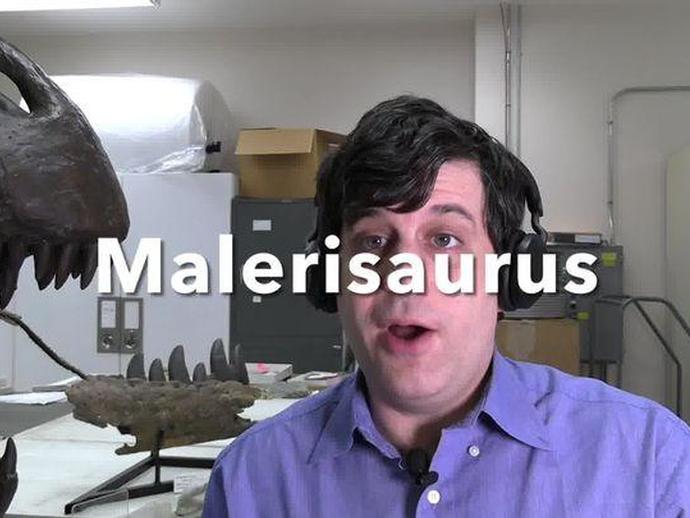
VMNH Assistant Curator of Paleontology Dr
December 15, 2021
VMNH Assistant Curator of Paleontology Dr. Adam Pritchard takes us back to the Triassic period and the very begining of the age of reptiles to highlight the lesser known reptile: Malerisaurus! Special thanks to Carter Bank & Trust (www.cbtcares.com) and Boxley Materials (www.boxley.com) for helping make this episode possible! ABOUT TALES OF ANCIENT LIFE Our planet has an incredible story to tell and VMNH Assistant Curator of Paleontology Dr. Adam Pritchard helps share it through his original video series, "Tales of Ancient Life". Dr. Pritchard uses spectacular fossils and other scientific specimens from the museum's paleontology collections to highlight the wonders of earth's ancient past in ways that are both relevant ...
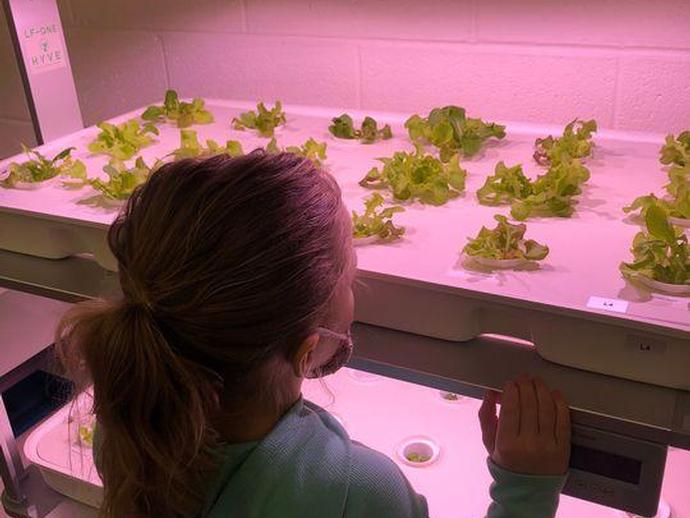
During the museum's Homeschool Science & Engineering Academy program in late November ...
December 15, 2021
During the museum's Homeschool Science & Engineering Academy program in late November, students planted a variety of seeds, such as lettuce mix and basil, in preparation of growing them inside the museum's new HYVE LF-ONE hydroponic growth system. During today's program, students checked in on the status of the growth and were not disappointed! The museum's hydroponic growth system allows users to grow plants indoors year-round without the need for soil. Because soil is not used, the system requires significantly less water to grow plants. While the system is currently being used by our homeschool students, it will be available for on-site programs with interested school groups in the near future.
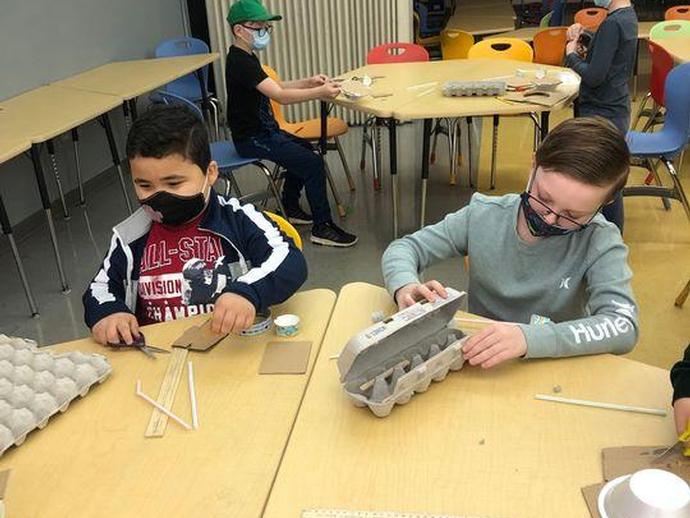
� Alright, stop, collaborate and listen
December 15, 2021
� Alright, stop, collaborate and listen. Homeschoolers are back with a brand new invention. � Inventions and influential scientists were the theme for today's Homeschool Science & Engineering Academy program, in which homeschool students ages 6-9 "invented" and cleverly engineered a variety of miniature cars! Here are a few pics from today's class...
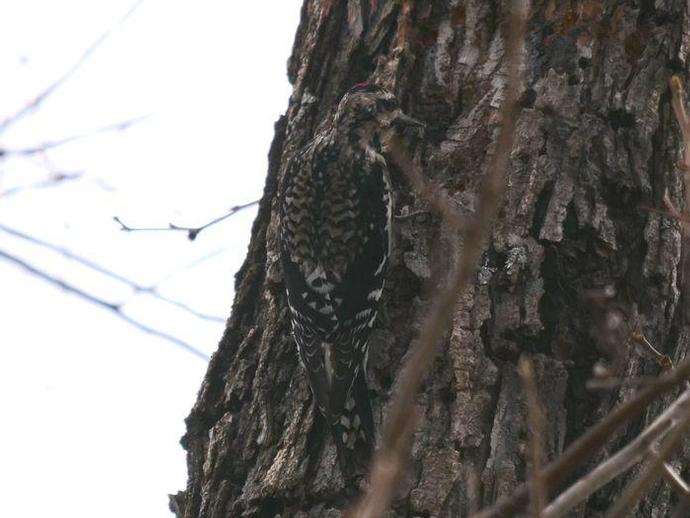
Ben here with the Wednesday edition of #BenInNature presented by our friends at Carter Bank & ...
December 15, 2021
Ben here with the Wednesday edition of #BenInNature presented by our friends at Carter Bank & Trust! The yellow-bellied sapsucker (Sphyrapicus varius) is one eight woodpeckers that you can find in Virginia, and in some ways it's the most unusual! For one thing, this is the only migratory woodpecker in Virginia; you'll only spot them in the winter because they breed in Canada. They're also the only sapsucker you'll find in Virginia. So what makes a woodpecker a sapsucker? While most woodpeckers tap holes in trees in order to find insects, sapsuckers drill neat rows of shallow holes in tree bark in order to eat the sugary sap that flows out. They also eat insects, berries, and nuts like other woodpeckers, but sap often ...
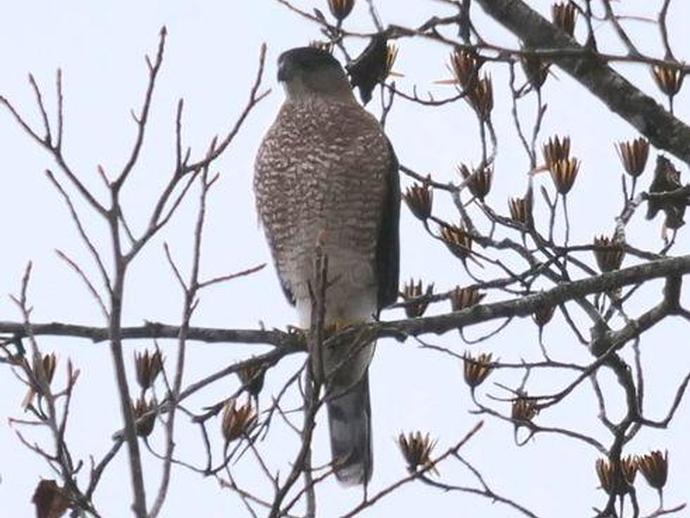
It's time for today's edition of #BenInNature presented by our friends at Carter Bank & Trust!
December 14, 2021
It's time for today's edition of #BenInNature presented by our friends at Carter Bank & Trust! The sharp-shinned hawk (Accipiter striatus) is one of the smallest hawks in the U.S. and Canada, and it's also one of the great conservation success stories. Back in the '60s and '70s, this species declined in numbers dramatically due to the use of DDT and other pesticides that caused the shells of their eggs to be too thin. Fortunately, their numbers have rebounded since DDT was banned in 1972, and it's possible that there are more sharp-shinned hawks on the wing today than there were prior to the introduction of DDT. That's mainly due to our bird feeders providing them with easy hunting grounds, but still, good news for the ...
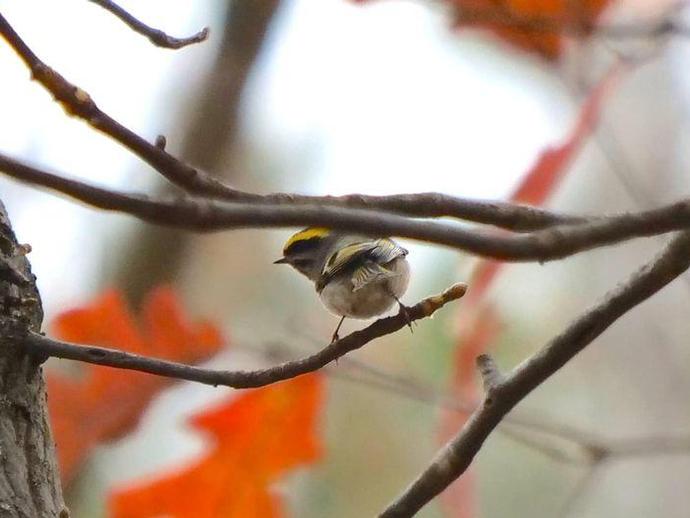
Ben here with the Monday edition of #BenInNature presented by our friends at Carter Bank & Trust!
December 13, 2021
Ben here with the Monday edition of #BenInNature presented by our friends at Carter Bank & Trust! This isn't the greatest photo of a golden-crowned kinglet (Regulus satrapa), but I'm just happy to have gotten a photo at all! These tiny songbirds tend to flit about from branch to branch very quickly, especially at the moment that a camera comes into focus. This species is one of the smallest songbirds in North America, measuring between 3-4 inches in length. The adults have a yellow streak on top of their heads, and the males have an orange patch in the middle of the yellow crown. They forage in trees and shrubs, eating insects, spiders, and insect eggs. Golden-crowned kinglets are migratory birds that breed in Canada. ...
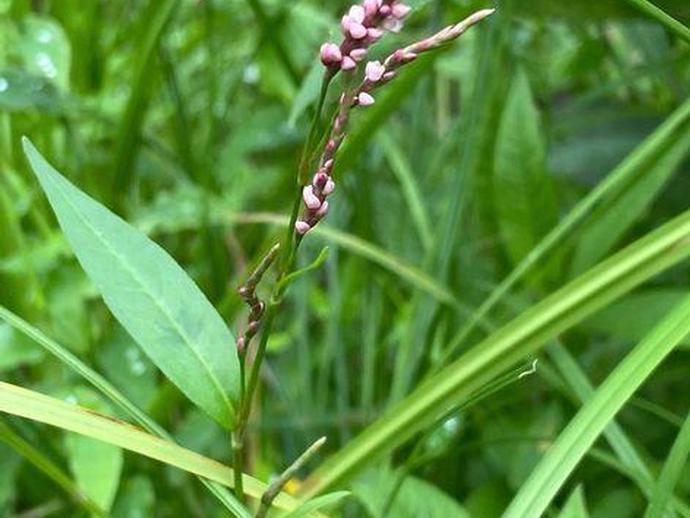
We're reaching into the archives for today's #BenInNature update presented by our friends at ...
December 12, 2021
We're reaching into the archives for today's #BenInNature update presented by our friends at Carter Bank & Trust! The following post was originally published on September 23, 2020. Pennsylvania smartweed (Persicaria pensylvanica) is a flowering plant in the buckwheat family, and if you've been strolling through a damp area lately, you have probably seen it in bloom. These plants love moist, poorly-draining soil; these two photos were taken next to a creek and next to a roadside drainage ditch, respectively. If you have drainage issues in your yard or garden, this plant can become a nuisance as it will often spread and crowd out your other plants. However, if you love birds, you might just want to keep it around! This ...
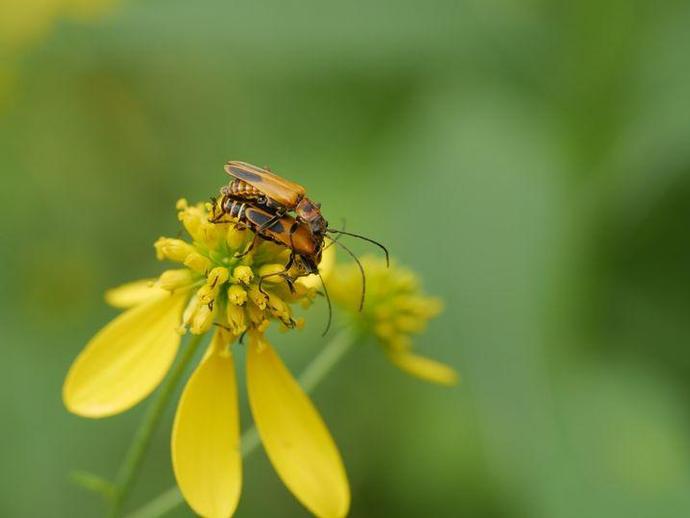
We're reaching into the archives for today's #BenInNature update presented by our friends at ...
December 11, 2021
We're reaching into the archives for today's #BenInNature update presented by our friends at Carter Bank & Trust! The following post was originally published on September 22, 2020. This is the goldenrod soldier beetle (Chauliognathus pensylvanicus), and I can't help but feel like a bit of a creep sharing these photos of intimate moments between these insects. However, in my experience, it's harder to find these beetles NOT mating than it is to find them mating. Feel free to write your own joke here! These beetles can be found throughout a large portion of North America, and they're particularly common in the Midwest. They're mainly active in August and September, and if you have a lot of goldenrod on your property, ...
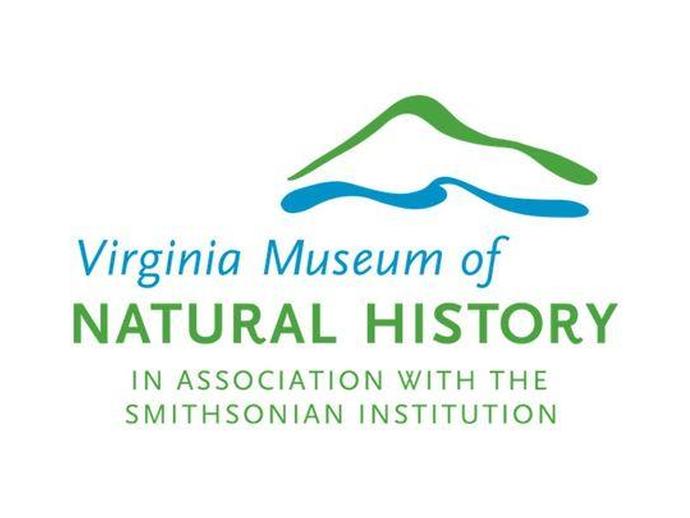
VMNH Education Manager Christy Deatherage is back this week for another episode of "Museum ...
December 10, 2021
VMNH Education Manager Christy Deatherage is back this week for another episode of "Museum Minute" to highlight a nautilus shell currently on exhibit at VMNH! ABOUT MUSEUM MINUTE The Virginia Museum of Natural History has a spectacular assortment of displays within its exhibit galleries! Some displays are unforgettable, while others don't always get the attention they deserve. Through the original series "Museum Minute", museum educators highlight various displays throughout the exhibit galleries, while providing intriguing facts you may not have known. "Museum Minute" is made possible thanks to VMNH Corporate Partners Carter Bank & Trust (www.cbtcares.com) and Boxley Materials (www.boxley.com).
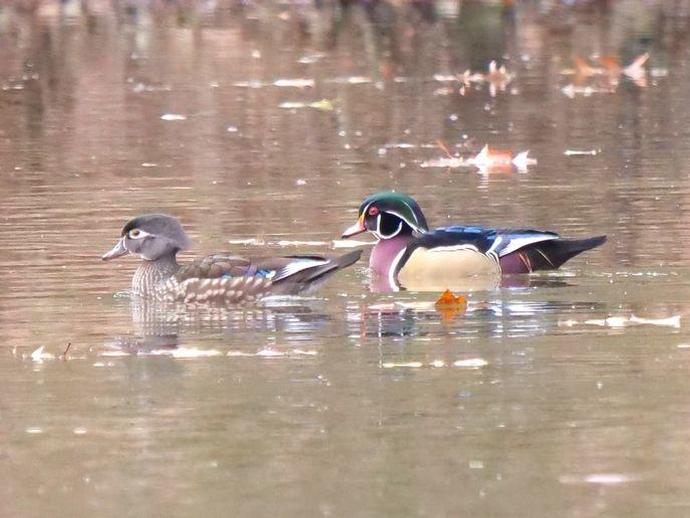
It's the last day of Duck Week here at #BenInNature, and I saved the best for last!
December 10, 2021
It's the last day of Duck Week here at #BenInNature, and I saved the best for last! Check out this pair of wood ducks (Aix sponsa)! The female is on the left while the male is on the right. As you can see, male wood ducks are pretty stunning; they're one of our most colorful North American waterfowl. Also known as the Carolina duck, wood ducks can be found year-round in the southeastern U.S. and on the west coast. There are also northern populations that migrate south for the winter. These ducks tend to live in wooded swamps, marshes, shallow lakes, and near ponds and creeks. They prefer to nest in tree cavities that are very close to water, although they'll also live in nesting boxes. Unlike many ducks, these guys have ...
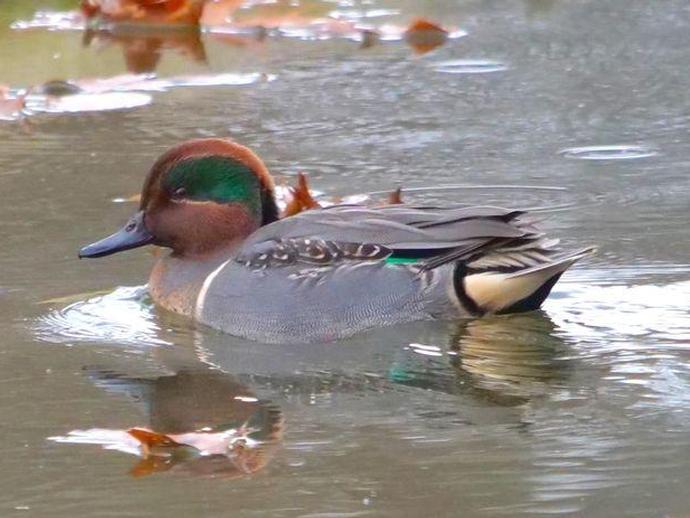
On the penultimate day of Duck Week here at #BenInNature ...
December 9, 2021
On the penultimate day of Duck Week here at #BenInNature, please enjoy this green-winged teal (Anas carolinensis)! The green-winged teal is the smallest of our North American dabbling ducks, meaning ducks that tend to feed on the surface of the water by tipping forward in shallow water to graze on aquatic plants and insects. Diving ducks, on the other hand, dive underwater and propel themselves with their large feet. These beautiful ducks are fairly common, but they're most often spotted in Canadian wetlands, which are their preferred nesting habitat. They migrate south in the fall and winter which is when you'll spot them here in Virginia. More than any other duck, green-winged teal prefer to forage for food on mud ...
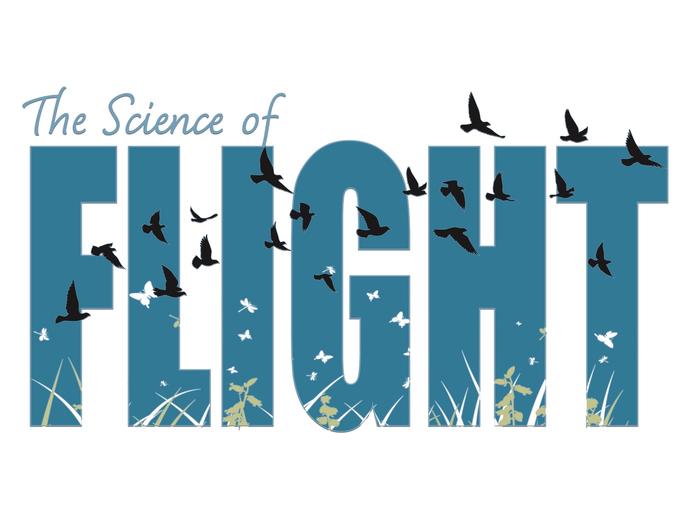
Upcoming special exhibit receives lift from Carter Bank & Trust
December 8, 2021
The Virginia Museum of Natural History's (VMNH) upcoming special exhibit, The Science of Flight, received wind beneath its wings thanks to recent funding support provided by Carter Bank & Trust. The $2,500 gift will support the development of the exhibit, as well as the exhibit's opening day celebration on January 22, 2022.www.cbtcares.com
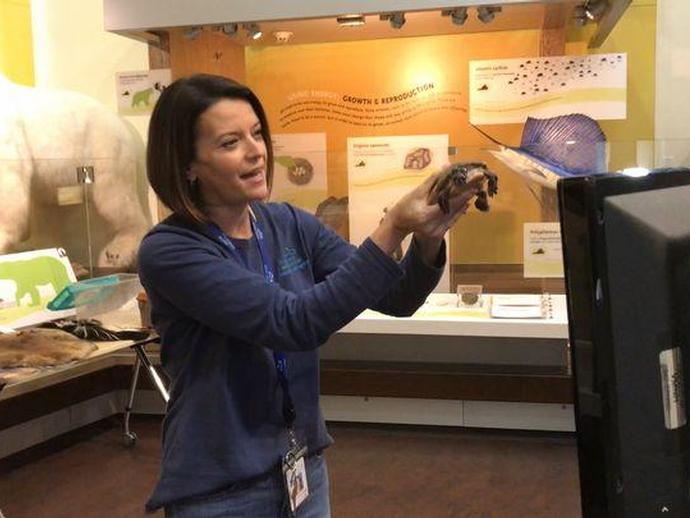
VMNH Education Manager Christy Deatherage was inside the Lee and George W
December 8, 2021
VMNH Education Manager Christy Deatherage was inside the Lee and George W. Lester, II How Nature Works gallery today with the museum's resident painted turtle, Sheldon, for a virtual education program with over 70 kindergarteners from Preston Park Elementary School in Roanoke! In this clip, the students are tasked with identifying the different objects Christy showed off as either living or not-living. The activity was part of the "Classification 101" virtual program, which focussed on animal characteristics and basic needs.

Today's food-filled edition of Doodle Bugs provided a variety of activities for our creative ...
December 8, 2021
Today's food-filled edition of Doodle Bugs provided a variety of activities for our creative attendees! Participants created candy canes using Fruit Loops and pipe cleaners, built clever structures from gumdrops and toothpicks, and even conducted the Magic Milk experiment that turns ordinary milk into an explosion of awesome colors! Are you the parent or grandparent of a 3-5 year old? Are you looking for a unique, interactive experience you can share together? If so, look no further than the museum's Doodle Bugs program! These hour-long classes take place at 10 a.m. on the second Wednesday of each month from September through May. The classes feature imaginative stories, fun activities, games, and crafts that spark ...
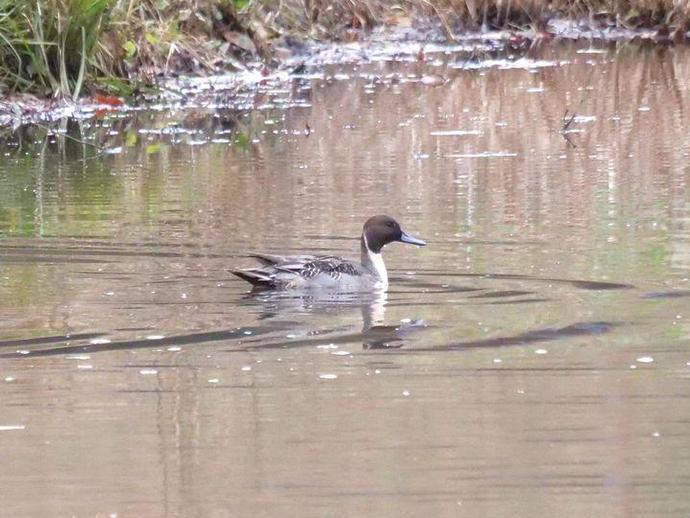
We're halfway through Duck Week here at #BenInNature ...
December 8, 2021
We're halfway through Duck Week here at #BenInNature, so I hope you're ready for more awesome ducks! This is the northern pintail (Anas acuta), and at one time, it was one of the most abundant ducks in North America! While the northern pintail has a worldwide distribution and isn't considered threatened, the number of pintails in North America has dropped precipitously since the 1950s. In 1957, it was estimated that there were more than 10 million pintails in North America. By 1964, that number had dropped to just 3.5 million. Why the big drop in population? For whatever reason, pintails seem particularly susceptible to avian diseases. In 1997, it was estimated that 1.5 million water birds died from avian botulism ...
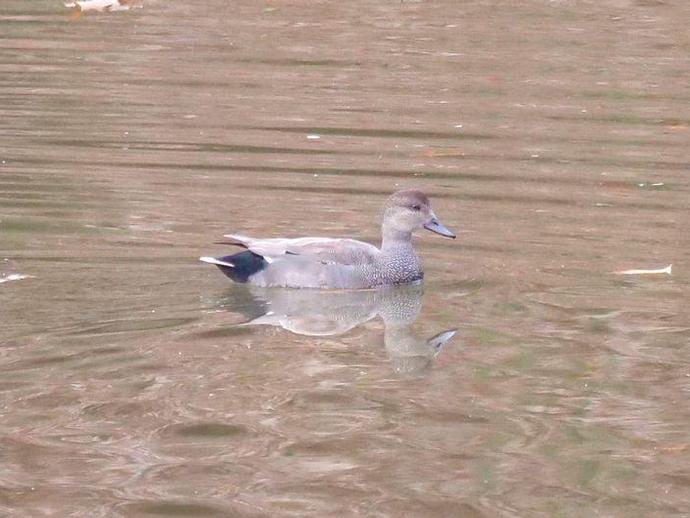
It's Duck Week here at #BenInNature ...
December 7, 2021
It's Duck Week here at #BenInNature, and today we're looking at Mareca strepera, better known as the gadwall! Gadwall aren't the most showy ducks, and it's easy for someone who doesn't know their ducks very well (like me) to mistake it for a female mallard. However, the male gadwall's black bill and black rump patch help make it easier to identify. You'll often find gadwall in pairs because they select their mates as early as late fall. Unless you're on the coast, you won't find gadwall year-round in Virginia; they're winter visitors. Look for them in reservoirs, ponds, and even city parks and sewage lagoons. Check back tomorrow for more ducks! ABOUT #BenInNature Social distancing can be difficult, but it presents a ...

Are you the parent or grandparent of a 3-5 year old?
December 6, 2021
Are you the parent or grandparent of a 3-5 year old? Are you looking for a unique, interactive experience you can share together? If so, look no further than the museum's Doodle Bugs program! These hour-long classes feature imaginative stories, fun activities, games, and crafts that spark creativity and curiosity, while providing the perfect opportunity for adults and grandparents to learn and have fun alongside their curious youngsters! This month's class, "Marvelous Food Messes", takes place Wednesday, December 8th at 10 a.m. During the class, children will create various structures from food items, learning about shapes, colors, and textures as they construct! Pre-registration is required, but spaces remain open ...
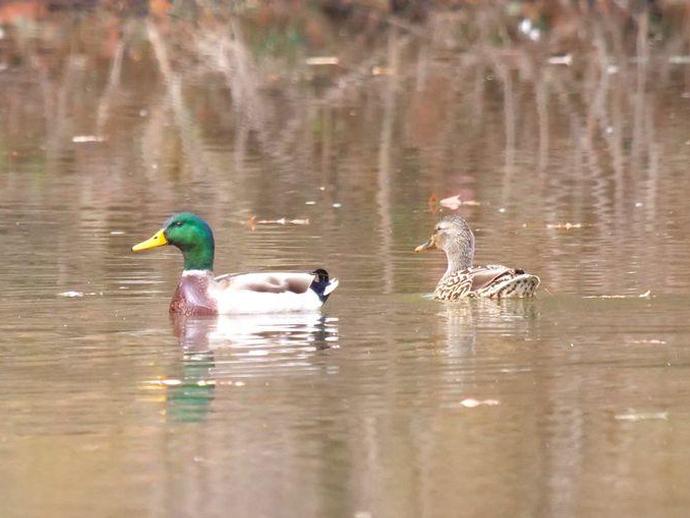
Ben here with today's edition of #BenInNature presented by our friends at Carter Bank & Trust!
December 6, 2021
Ben here with today's edition of #BenInNature presented by our friends at Carter Bank & Trust! Welcome to DUCK WEEK! Last week, I joined VMNH Associate Curator of Invertebrate Zoology Dr. Kal Ivanov, Myriapodologist Dr. Jackson Means, and Emeritus Curator of Geology and Expert Birder Dr. Jim Beard for a morning of birding at Lake Lanier in Martinsville. While we saw plenty of cool birds, the highlight of the trip was the variety of ducks, including a number of migratory species I'd never seen before. This week I'm going to highlight the ducks we spotted, starting with one of our most common species: the mallard (Anas platyrhynchos). Mallards are the ancestors of most domestic ducks, and they're an extremely common ...
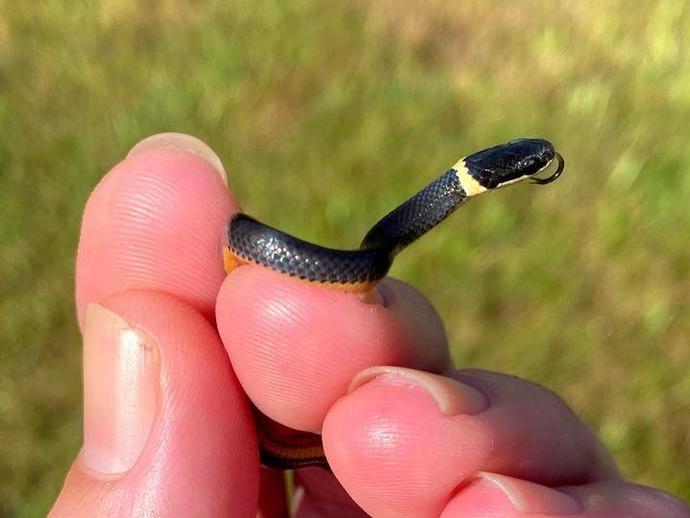
We're reaching into the archives for today's #BenInNature update presented by our friends at ...
December 5, 2021
We're reaching into the archives for today's #BenInNature update presented by our friends at Carter Bank & Trust! The following post was originally published on September 21, 2020. I was very excited when I found this snake in my bathroom last week, which is a statement that has probably never been typed before. This is a Diadophis punctatus edwardsii, the Northern ring-necked snake. It's one of 14 different subspecies of ring-necked snake! Ring-necked snakes aren't generally counted alongside the big three venomous snakes of Virginia (copperhead, cottonmouth, and timber rattlesnake), but they are mildly venomous. However, as evidenced by the fact that I'm holding this one in my bare hand, they don't present a threat to ...
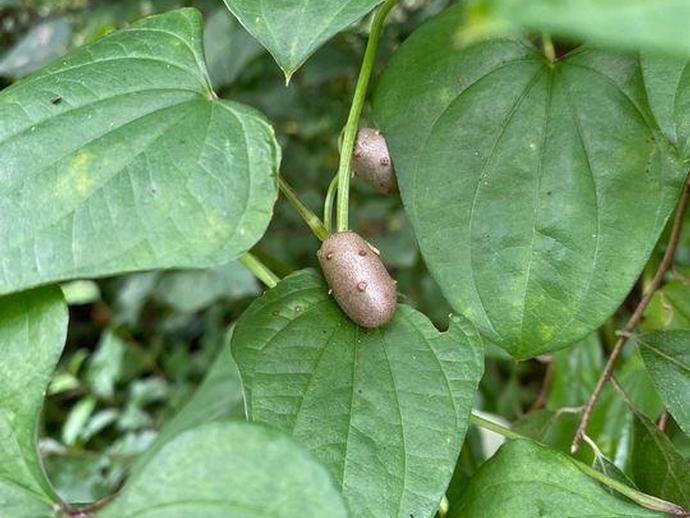
We're reaching into the archives for today's #BenInNature update presented by our friends at ...
December 4, 2021
We're reaching into the archives for today's #BenInNature update presented by our friends at Carter Bank & Trust! The following post was originally published on September 18, 2020. The other day I spotted this unusual vine on my property, covered in what looked like tiny potatoes. As it turns out, that isn't too far from the truth. This is Dioscorea polystachya, commonly referred to as Chinese yam! As the name suggests, this plant is not native to the U.S. and is considered an invasive species. It originated in China but can now be found throughout East Asia. It was introduced to the U.S. in the 1800s or early 1900s, and interestingly enough, it was introduced in Europe in the 1840s to help combat the northern European ...
Archives
2025
2024
2023
2022
2021
2020
2019
2018
2017
2016
2015
2014
2013
2012
2011
2010
2009
2008

Please Visit Us Soon
Hours:
Tuesday - Saturday: 10am - 4pm
Sunday: Noon to 4pm (Memorial Day Weekend through Labor Day Weekend only)
Monday: Closed
Admission:
$12 for ages 18-59
$6 for ages 3-17, seniors 60+, and college students
FREE for children under 3, museum members, members of ASTC Passport participating institutions, and EBT cardholders
My 4 year old son loves going to the museum. The exhibits are educational, interactive and kid-friendly.
”

 Hours & Admissions
Hours & Admissions Directions
Directions